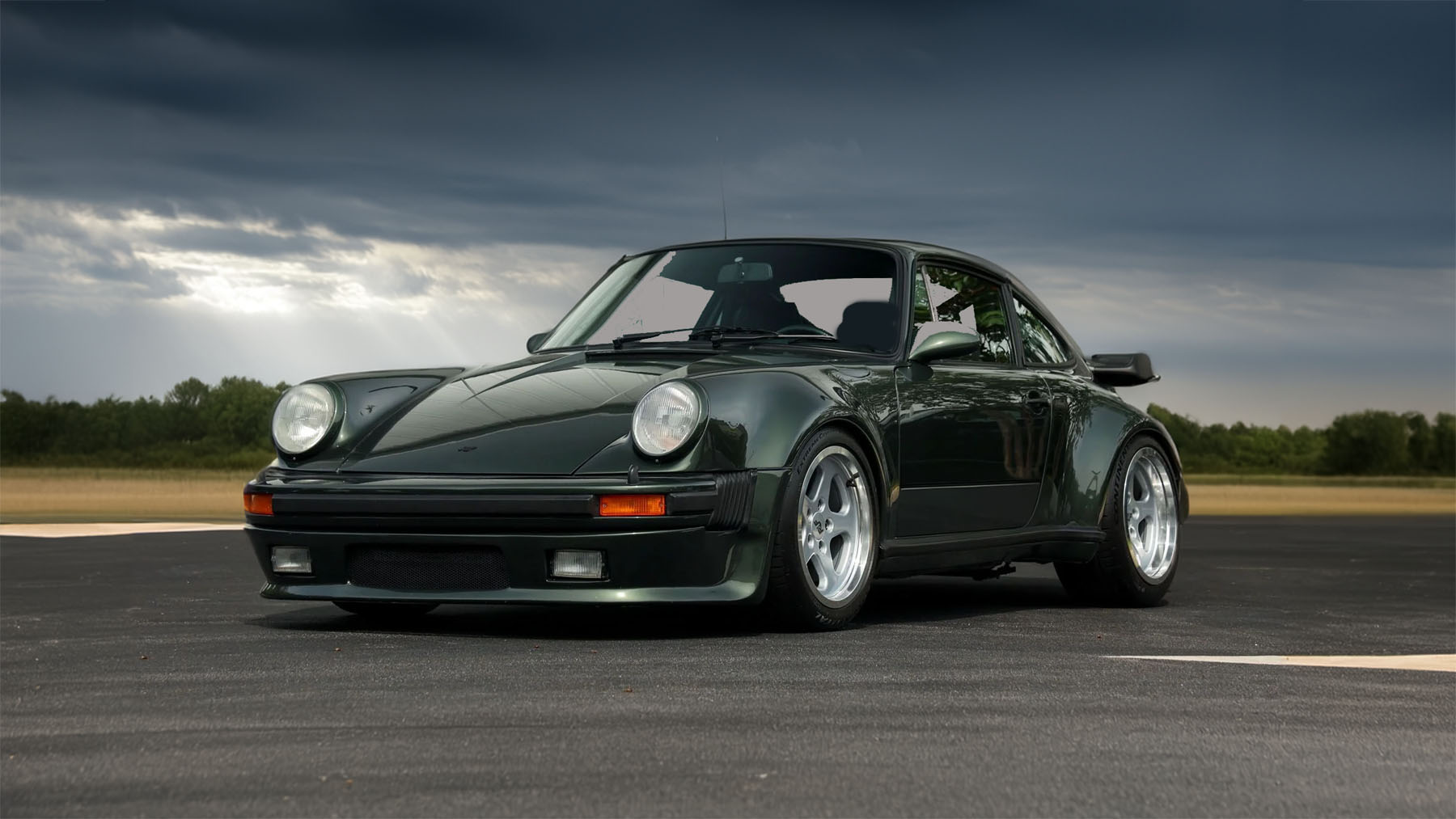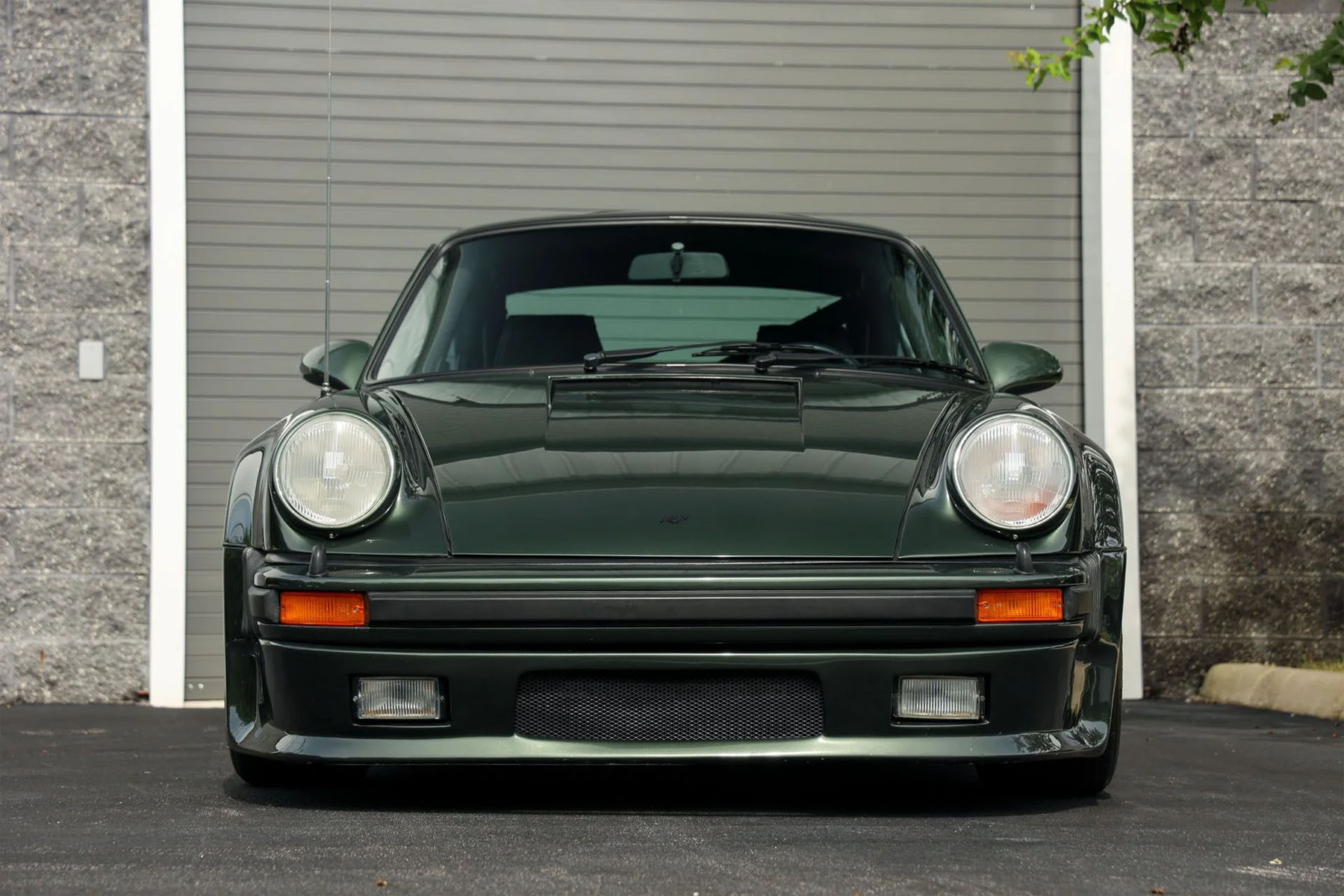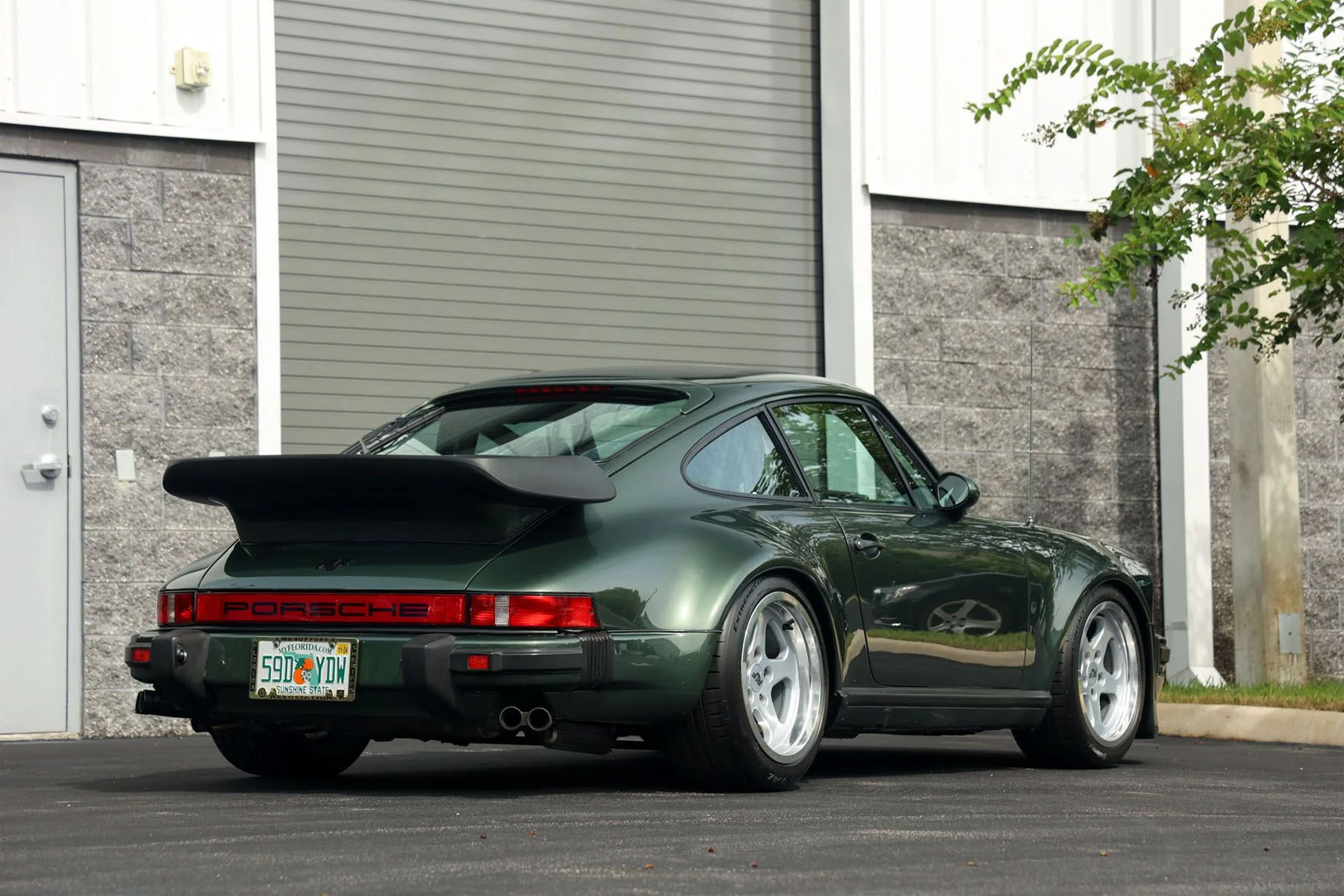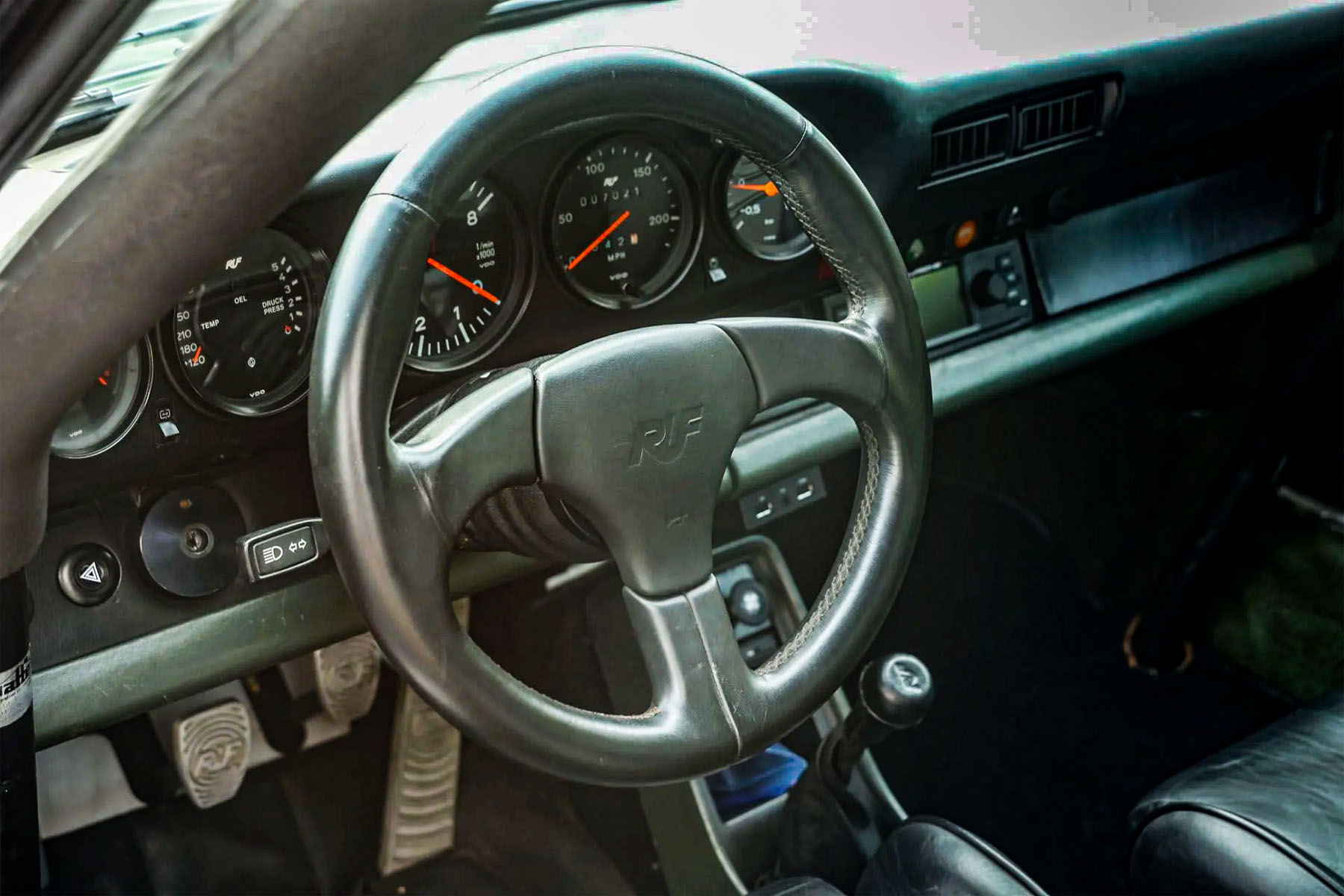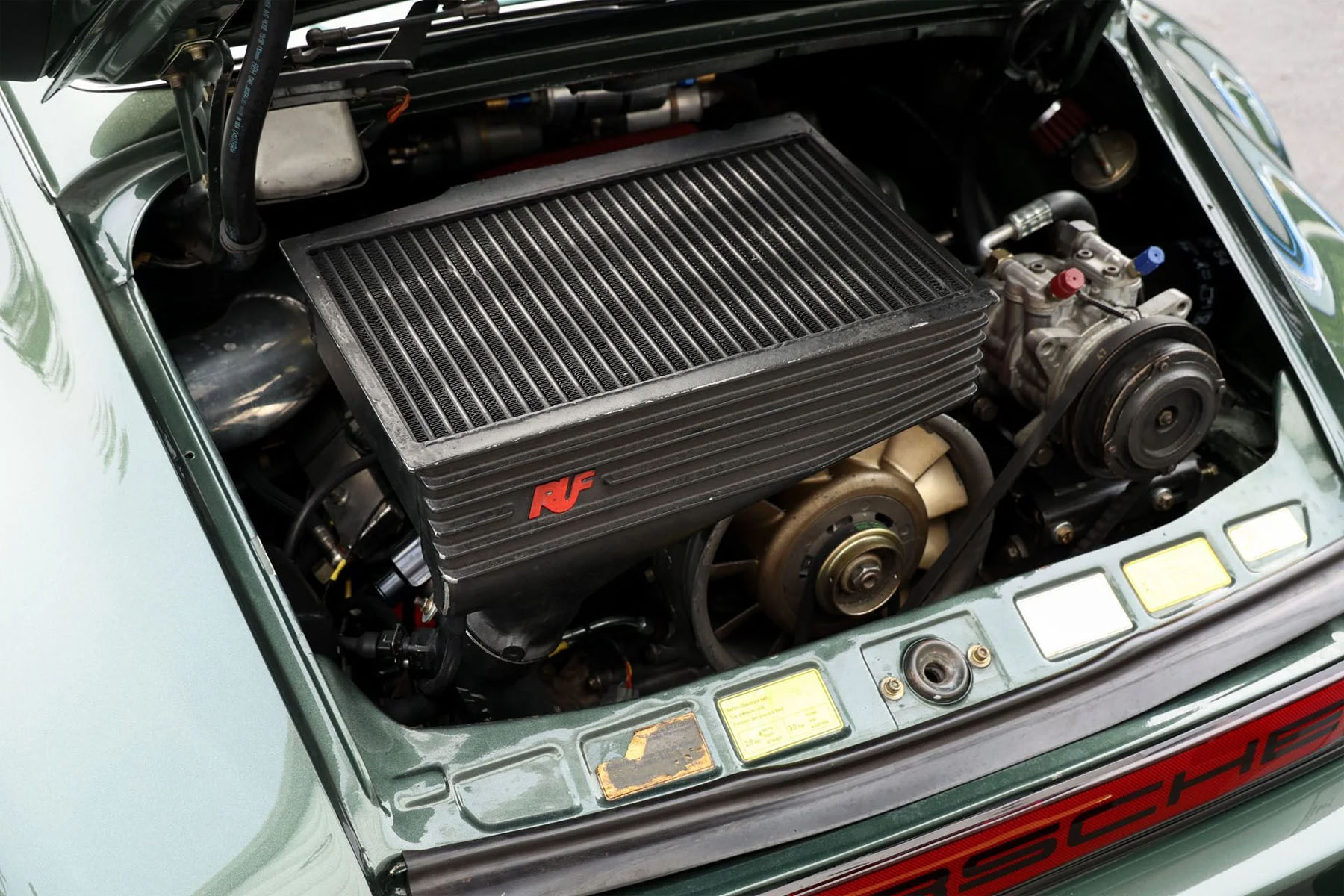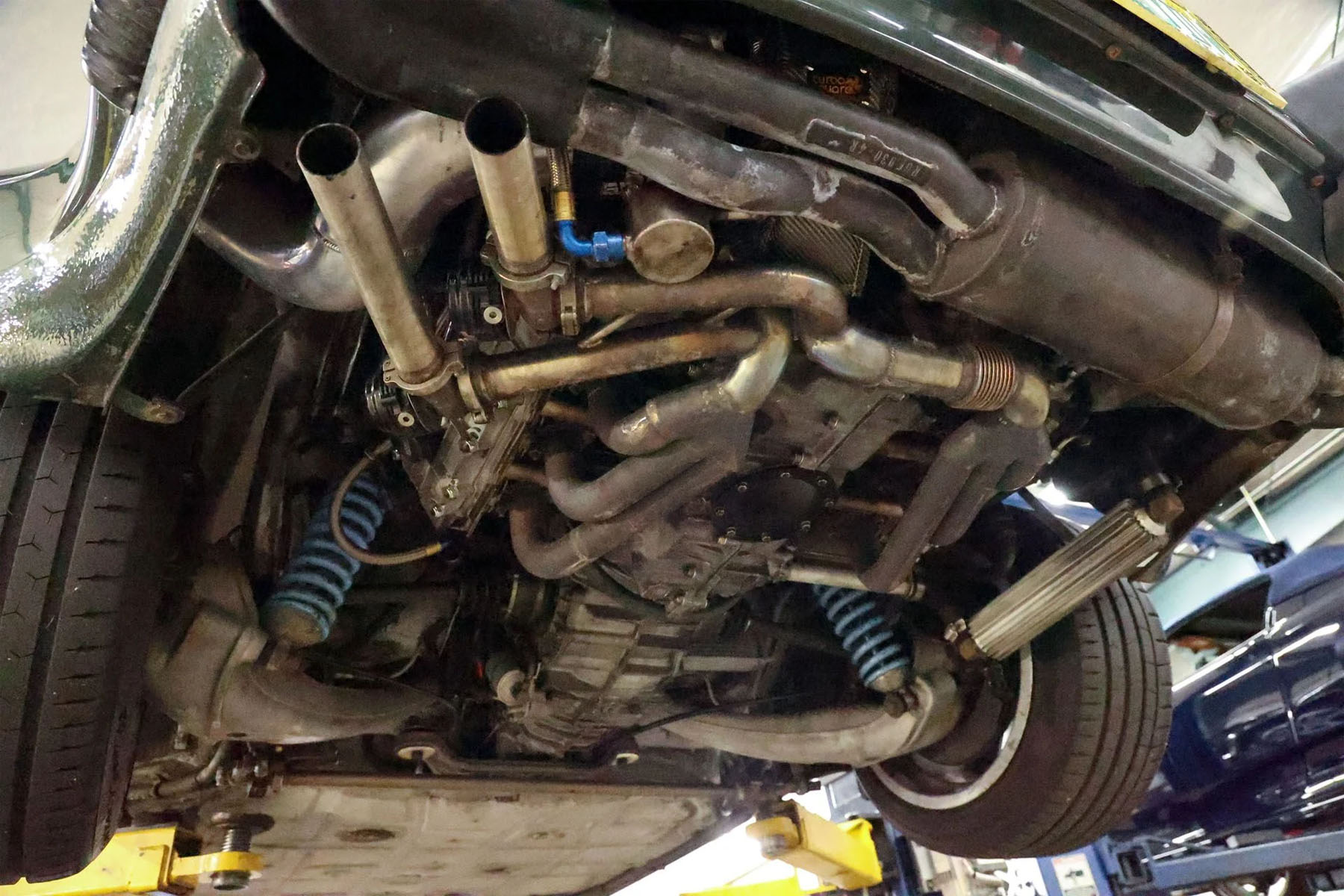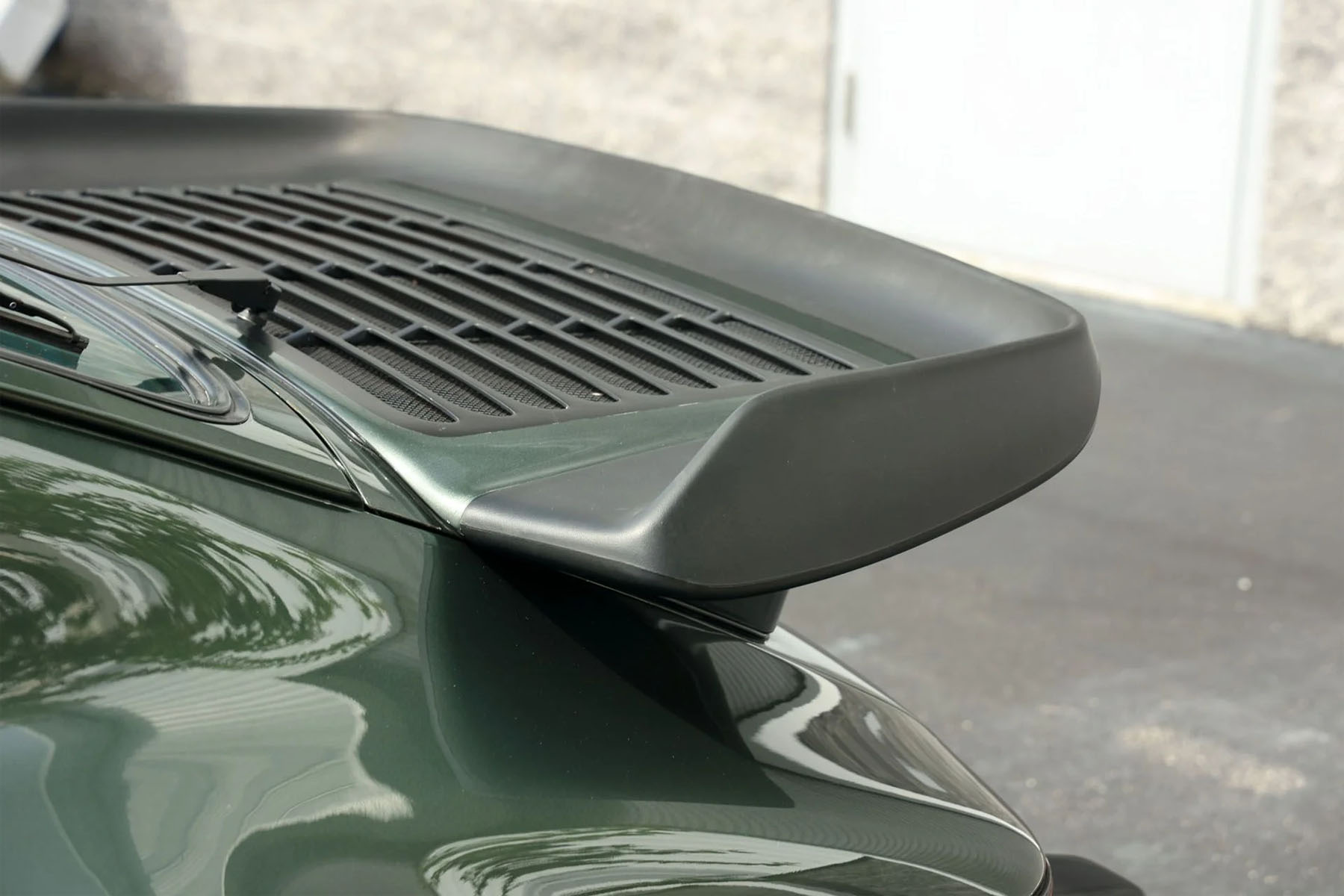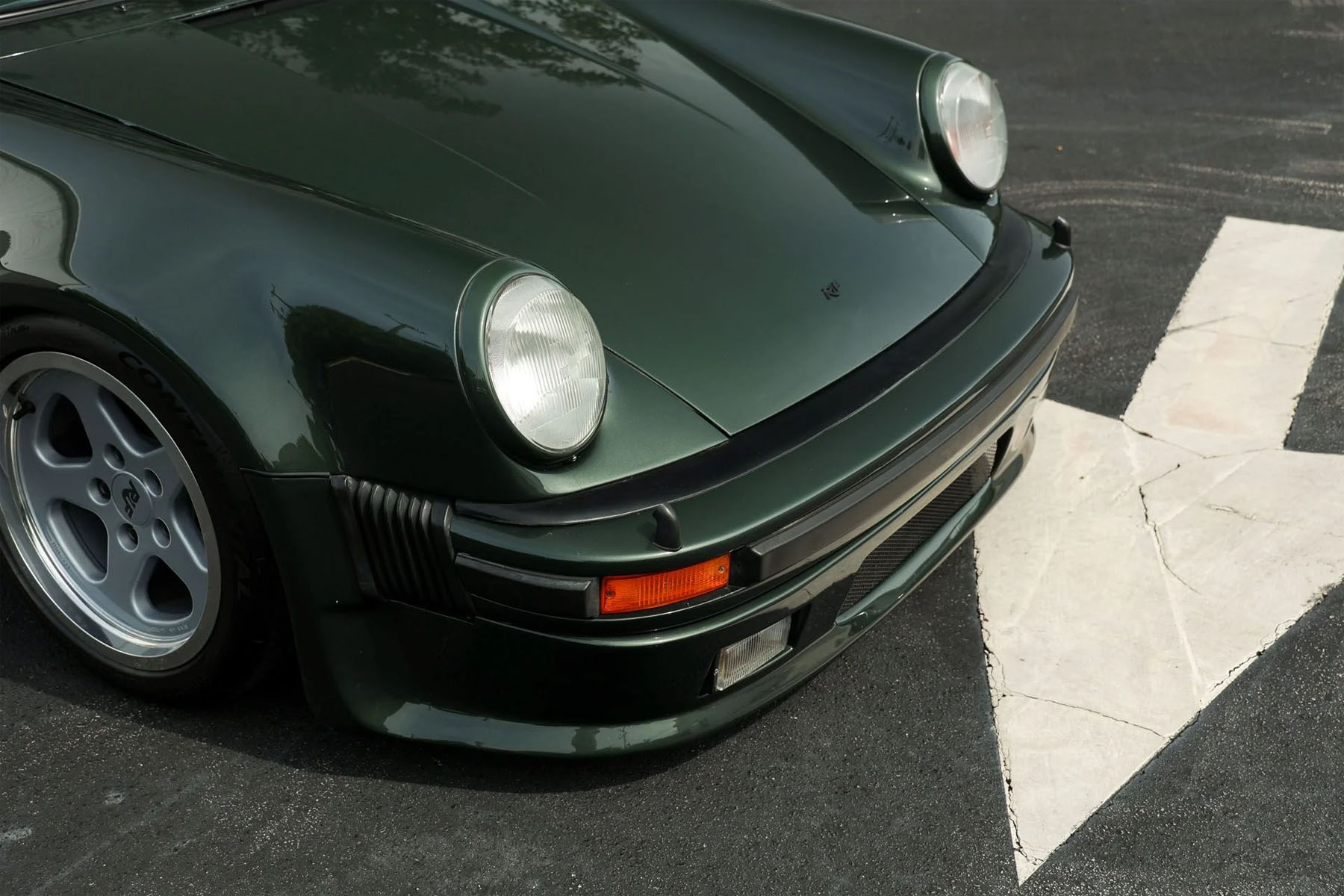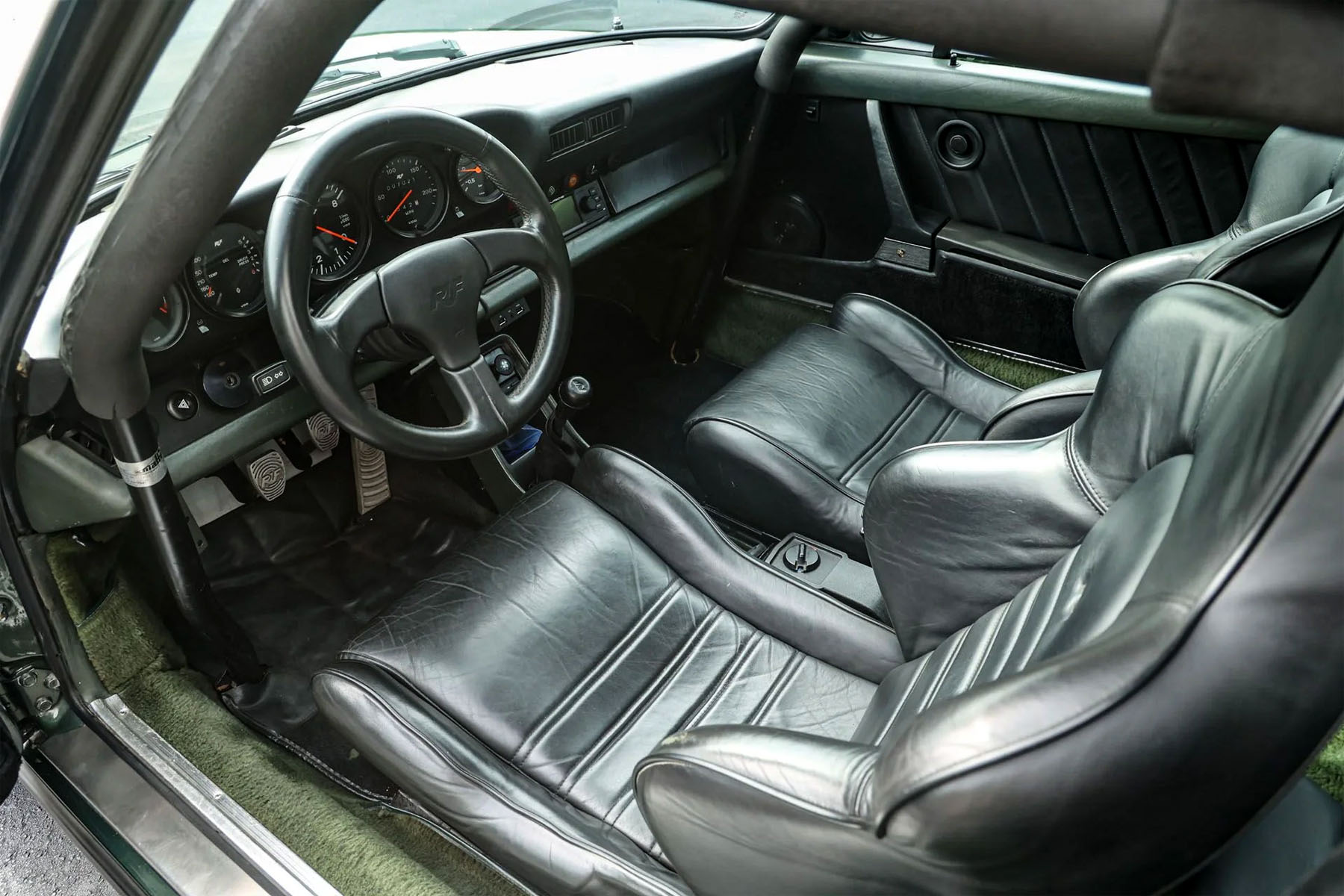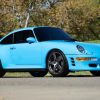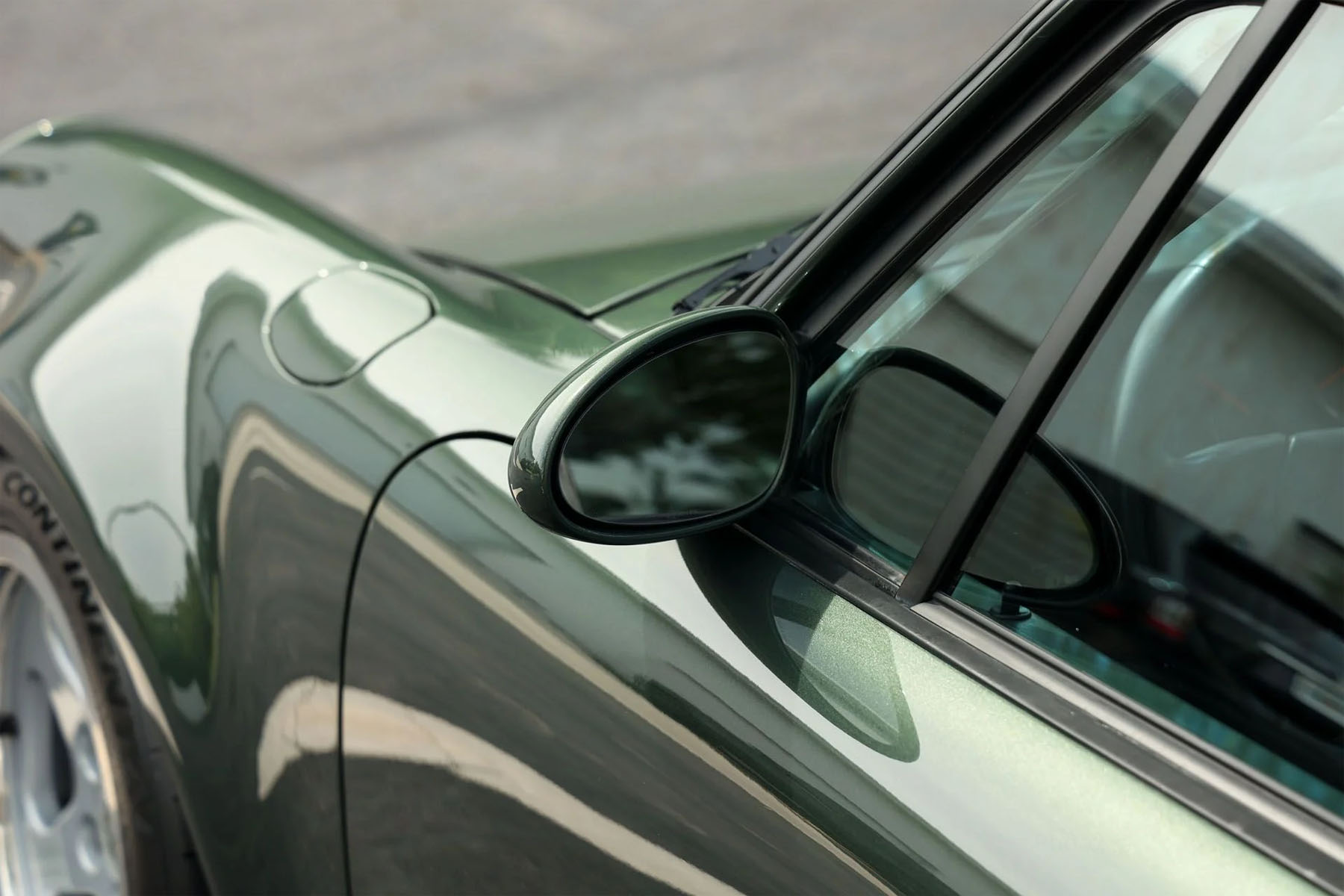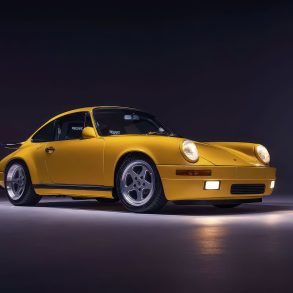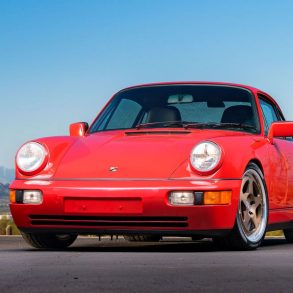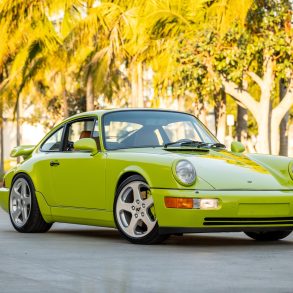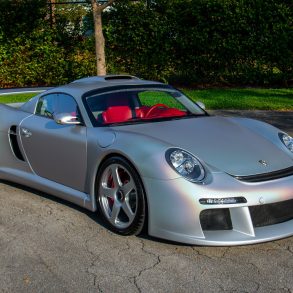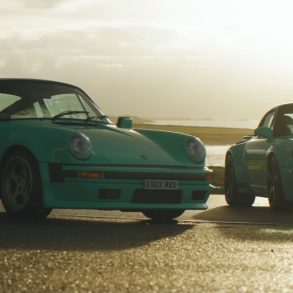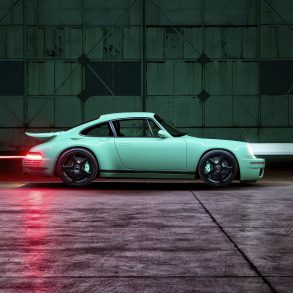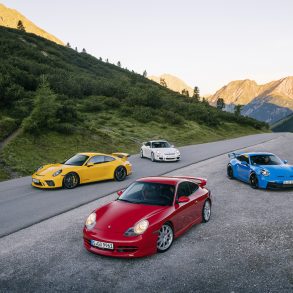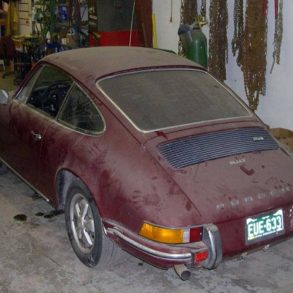Some colors suit an era of 911 so well they become synonymous with that car. Oak Green Metallic is one such shade, and the 911 must be the 1970s Turbo. In fact,Dr. Ferry P orsche’s personal Turbo was specified in Oak Green Metallic, further evidence of the wise decision of those who made the color their final choice. The type 930 quickly reigned supreme as Germany’s king supercar with power, looks, and exclusivity, yet for those interested in more power, racing-inspired components and unique looks, the fledgling RUF Automobile of Pfaffenhausen, Germany, offered all that and more.
Highlights
- Modified to Group B Turbo RUF (BTR) specification
- Chassis No. 9308700670
- Engine No. 6780712
- Unique RUF features include special aerodynamics, a five-speed transmission, Speedline wheels, special RUF seats, a full Matter roll cage, and more
- Features a larger displacement 3.4-liter turbocharged engine noted in period literature to produce 374 horsepower
- BTR models tested in period featured exceptional performance with a zero to 60 mph in 4.4 seconds on the way to a top speed of 186 mph
- Originally finished by Porsche in Oak Green Metallic over a Black leather interior with Green carpeting
- Just over $60,000 was invested in late 2023 on an engine out service at Stahl Motorsports of West Palm Beach, Florida
RUF Background
Founded in 1939 and focused on modifying Porsche automobiles and creating bespoke models since 1977, the RUF legend began in the late 1970s. While RUF is rightly celebrated for their manufacturer status, this was only achieved by 1981 with the earliest RUFs and later upgraded examples retaining their original Porsche chassis numbers. So it is for this particular 1978 Porsche 911 Turbo, built with “Group B Turbo RUF” (BTR) specification components. In period, RUF offered a thick catalog of complementary enhancements and it appears the owner who commissioned the work did not shy away from what surely must have been a lengthy and costly upgrade process.
Engine
To start, the original 3.3-liter turbocharged engine features a displacement increase to 3.4-liters along with twin-plug heads, a larger RUF intercooler, and a four-outlet exhaust system. Period RUF documentation estimates power output for these modifications at 374 horsepower and 480 newton meters of torque. All of this power is transmitted through RUF’s own five-speed transmission, a design that the Porsche 911 Turbo would not feature until 1989! Putting the power to the road, the car features Porsche 935-style Bilstein coil-over suspension front and rear. Porsche 917-derived brakes were of similar specification to the 911 Turbo — albeit RUF branded — with the wheel wells filled out by the epic 17 inch five-spoke RUF-designed wheels manufactured by Speedline in Italy. With silver paint and polished lips, they are show-stoppers, especially with the car subtly lowered giving them additional presence.
Exterior
While the basic shape of the widened 911 Turbo body remained, RUF designed their own autobahn-tested aerodynamic enhancements to suit the lofty speeds the BTR was capable of. A deeper front spoiler with an oil cooler cutout featured up front, sculpted window frame mounted side mirrors, a body color upper rear window trim piece, and a noticeably larger rear wing all aid in not only raising the BTR’s top speed and downforce numbers but look the part.
Interior
The inside, for those fortunate to sit in the RUF sculpted sport seats, is the personification of the lofty expectations held by those who know these early Turbos best. RUF-branded gauges by VDO feature on the dashboard with the clock replaced by a 935-style mechanical boost gauge all framed by a 930 S-type steering wheel with RUF logo embossed on the center horn pad. The same goes for the RUF shift knob, pedals, and floor mats. The occupants are shielded by a full Matter roll cage, the same as chosen by Porsche’s competition department. In fact, the only update to the exceptional period interior appears to be newer door speakers and a modern Porsche PCCM head unit with Apple Car Play, certainly acceptable to those looking to enjoy modern creature comforts in an older 911 Turbo.
El Hulk
According to research this RUF BTR lived in Puerto Rico for some time where it received the nickname “El Hulk” not only for its green color but its muscular looks and power. It is believed the car was brought to the states in 2022 by Randy Tillim of Savage Garage YouTube fame. In 2023 the car was acquired by the consignor based in Florida who proceeded to invest just over $60,000 into the car with Stahl Motorsports of West Palm Beach. Invoices on file record that the engine and five-speed transmission were removed. The engine was placed on a stand and serviced with new oil lines, gaskets, spark plugs, and an oil pump reseal. At the same time the transmission received new seals and fluid. The chassis received new ball joints, new Turbo tie-rod ends, new front wheel bearings, new parking brake pads, a new Porsche rear center reflector, a new steering column bushing, and an electric oil cooler fan among other items.
Early RUF BTRs and their conversion counterparts are among the earliest modified RUF automobiles striking a fine balance between a production 911 Turbo and some of the more outlandish tuner cars of the mid-1980s. In fact, while the power and performance of the BTR is readily apparent, it is behind the wheel where the RUF details inside and out continue to impress, just as they did when this Group B Turbo RUF was created.
Above content © 2024 Broad Arrow / Hagerty reviewed and edited by Rex McAfee
More information
Go HERE
Related RUF content


